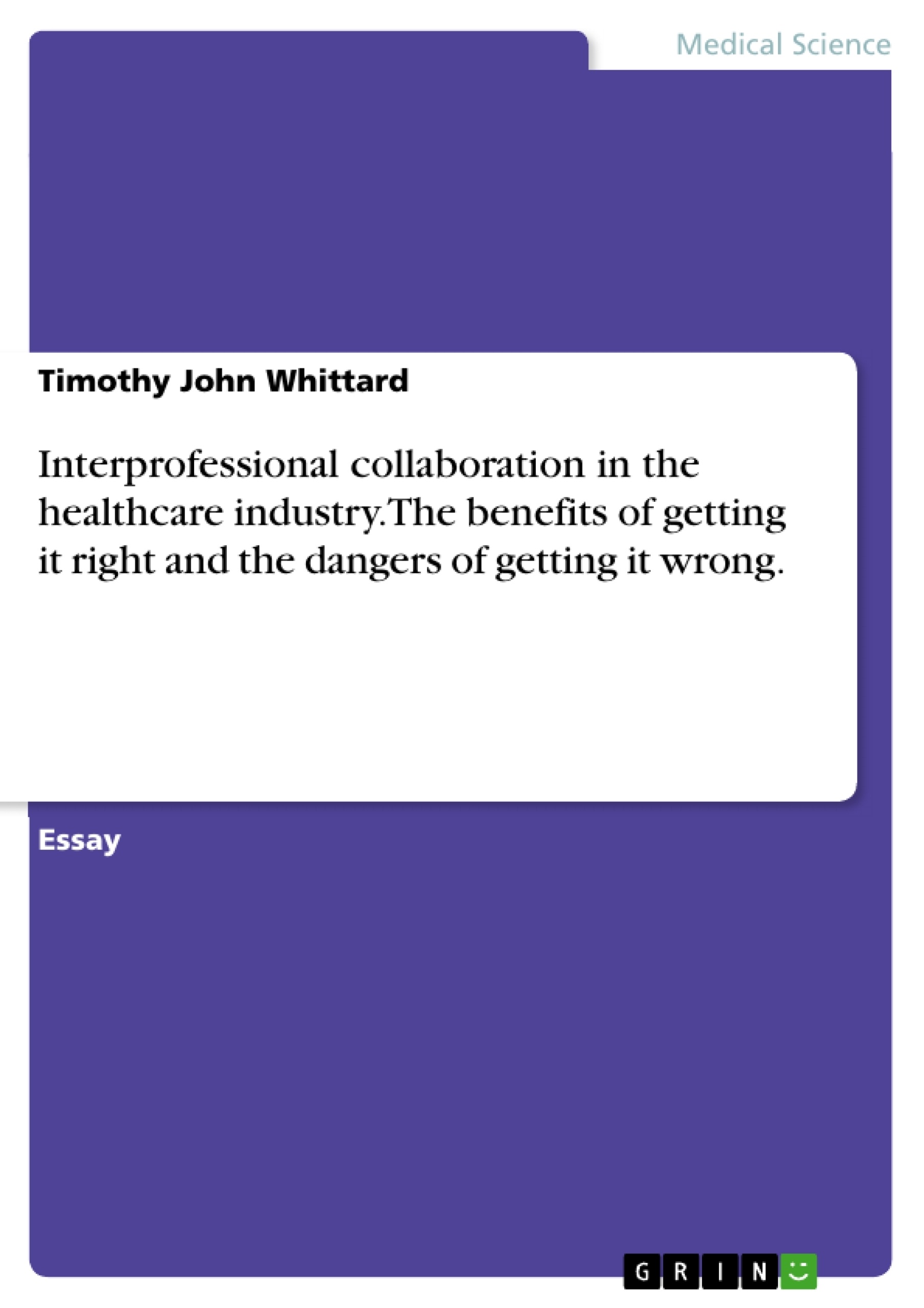This is the final instalment in the series of essays examining the subject of interprofessional working within the healthcare industry. A range of issues are discussed and the implications, findings and recommendations of a wide range of sources are used to support any arguments.
The literature reviewed highlights past errors, mistakes and pitfalls, the consequences of these and ways that healthcare professionals may work together to reduce the likelihood or prevent the repetition of such disasters and omissions of action to safeguard the vulnerable in future.
Inhaltsverzeichnis (Table of Contents)
- Trigger
- Interprofessional Module 3 – Briefing Paper 1
- Accountability and Interprofessional Partnerships
- The Importance of Accountability in Healthcare
- Challenges in Achieving Accountability
- The Need for Clarity and Support
- Interprofessional Module 3 – Briefing Paper 2
- Clinical Governance and Accountability
- Patient-Centred Care and Accountability
- Interprofessional Collaboration and Accountability
Zielsetzung und Themenschwerpunkte (Objectives and Key Themes)
This briefing paper aims to explore the complex concept of accountability in the healthcare system, particularly as it relates to interprofessional partnerships. The author examines the challenges faced by student nurses and other healthcare professionals as they navigate accountability to different stakeholders, including patients, supervisors, and organizational structures. The paper also considers the role of clinical governance, patient-centered care, and interprofessional collaboration in managing accountability effectively.
- The multifaceted nature of accountability in healthcare
- The transition from student to qualified healthcare professional and the challenges of increased accountability
- The tension between individual and organizational accountability, particularly in relation to patient-centered care
- The importance of interprofessional collaboration in achieving effective and accountable healthcare
- The need for clear understanding of responsibilities and the importance of seeking support when necessary
Zusammenfassung der Kapitel (Chapter Summaries)
Interprofessional Module 3 – Briefing Paper 1
This paper explores the meaning of 'accountability' and its relevance to individual healthcare professionals. The author discusses the importance of accountability in preventing errors and protecting patients. However, they also acknowledge the anxieties and challenges associated with taking on greater responsibility, particularly for student nurses who are preparing for their professional roles. The paper emphasizes the need for clear understanding of responsibilities and the importance of seeking support when necessary.
Interprofessional Module 3 – Briefing Paper 2
This paper extends the discussion of accountability to incorporate the concepts of clinical governance, patient-centred care, and collaborative practice. The author argues that clinical governance is essential for maintaining high standards and preventing mistakes, but that it can sometimes create tension between individual and organizational accountability. They also discuss the importance of patient-centred care and the challenges of consistently achieving this in practice. The paper concludes by highlighting the crucial role of interprofessional collaboration in providing effective care and managing accountability in a complex healthcare system.
Schlüsselwörter (Keywords)
This paper focuses on the complex interplay of accountability, interprofessional relationships, clinical governance, patient-centred care, and collaborative practice in the healthcare system. It examines the challenges and opportunities associated with managing accountability for individual healthcare professionals, particularly those transitioning from student to qualified professional. The author emphasizes the importance of clear understanding of responsibilities, seeking support, and embracing interprofessional collaboration to ensure effective and ethical healthcare delivery.
- Arbeit zitieren
- Timothy John Whittard (Autor:in), 2007, Interprofessional collaboration in the healthcare industry. The benefits of getting it right and the dangers of getting it wrong., München, GRIN Verlag, https://www.grin.com/document/475182



